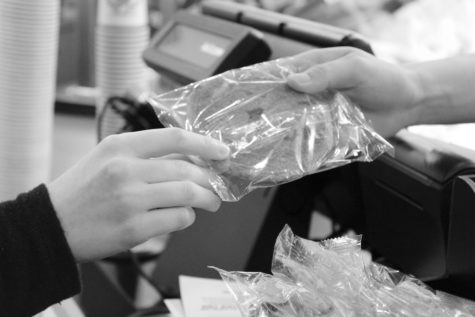Harmful chemicals found in fast food packaging

Ordering fast food is a regular experience for sophomore Abby Berkowitz. After learning that her favorite fast food restaurant may use potentially dangerous chemicals called perfluorinated chemicals, also known as PFCs, in their food packaging, she now thinks twice before ordering.
A study conducted in February by Simona Balan, senior environmental scientist at the California Department of Toxic Substances Control, tested packaging from 28 fast food restaurants for the presence of fluorine, an indicator of PFCs. The results of the study revealed the tested fast food restaurants generally had PFCs in about 50 percent of their packaging.
While PFCs were found in paper wrappers, plastic containers, paper cups and french fry containers, they were not found in cardboard.
In a phone interview, Balan said PFCs are chemicals that some fast food companies use to prevent grease from soaking through food packaging. Every time food comes into contact with packaging that contains PFCs, a portion of the chemical transfers into the food. Ingesting a small amount of PFCs is safe, but scientists have yet to determine what amount of PFCs will have long-term, harmful effects.
Balan said although scientists are hesitant to say PFCs directly cause harm to the body, the study associated PFCs found in food packaging to cancer, immunotoxicity, infertility, obesity and liver disease.
Berkowitz is aware that companies use modification for their food but is concerned about her health, “… knowing that there’s even more chemicals going into this already not healthy food is a little bit concerning,” Berkowitz said.
Efforts to interview Quest, food service operators of District 225, about its food packaging were unsuccessful. Although an interview was scheduled, it did not take place as planned, and subsequent phone calls and e-mails requesting an interview went unreturned.
Berkowitz said PFCs in food packaging have her worried about her health, and eating at restaurants that use PFCs would be a health risk she wants to avoid.
Freshman Casey Miller said companies that use PFCs are terrible because the chemicals are “artificial” and are “something they really need to find alternatives for.”
According to Balan, there are alternatives to using PFCs, but companies prefer not to use them because of the extra cost.
Berkowitz said she still visits her favorite restaurants, but plans to be more cautious when choosing where to eat.
“Sometimes I’d, like, want to get fast food because I wouldn’t want to make myself something, but now it’s … worth it to cook and to kind of put in that effort to make something if it’s going to be healthier,” Berkowitz said.

